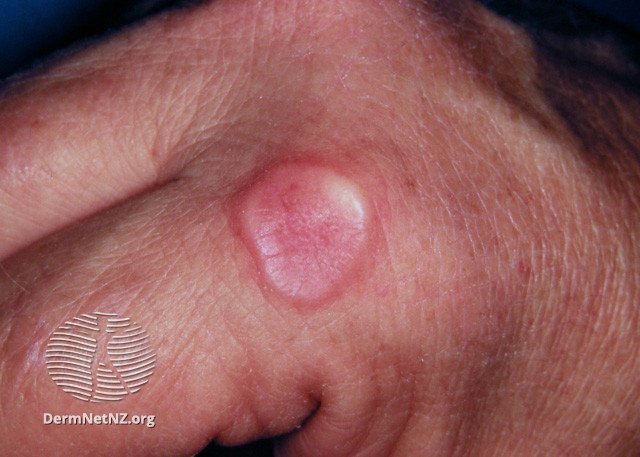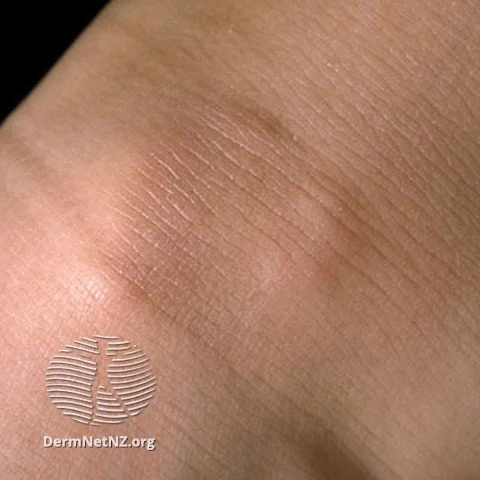
Granuloma Annulare
An example of granuloma annulare. Sometimes this gets mistaken for ringworm because of its ring-like shape; however, it is smooth and not scaly.
Credit: DermNet NZ
What is granuloma annulare?
Granuloma annulare is a chronic skin condition characterized by small, raised, red-brown bumps. These lesions typically appear on the hands, feet, and elbows. What distinguishes granuloma annulare from many other skin conditions is its depth; the inflammation occurs beneath the skin, presenting as smooth, firm bumps. Due to its ring-like appearance, it is sometimes mistaken for ringworm by both patients and medical professionals.
What causes granuloma annulare?
The exact cause of granuloma annulare remains unknown. People of all ages, from children to the elderly, can develop this condition. There are two primary types: localized and generalized. The localized form typically has no associated internal conditions. However, the generalized form is more prevalent among individuals with conditions like hypothyroidism, diabetes, or other autoimmune disorders.
What are the symptoms of granuloma annulare?
Granuloma annulare is generally asymptomatic, meaning it neither hurts nor itches. However, lesions located over bony areas might cause discomfort. While some patients might choose not to seek treatment if the appearance doesn't bother them, the condition can persist for several years. As a result, many opt for treatment to minimize its visibility.
How do I treat granuloma annulare?
Due to the deep-seated inflammation characteristic of granuloma annulare, topical treatments often prove less effective. More profound interventions, such as oral medications or injections, are usually recommended.
Treatment options include:
Super potent topical steroids
Intralesional steroids (e.g., Kenalog)
Oral medications like hydroxychloroquine, dapsone, or ROM (rifampin, ofloxacin, minocycline)
Biologic agents, such as Adalimumab
Granuloma annulare in its deep form can appear as bumps under the skin.
Credit: DermNet NZ
Patch-type granuloma annulare often appears on the upper thighs.
Credit: DermNet NZ



